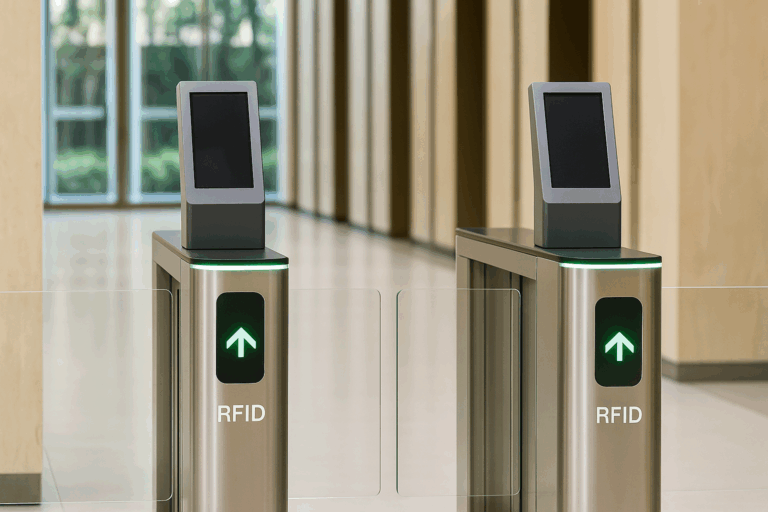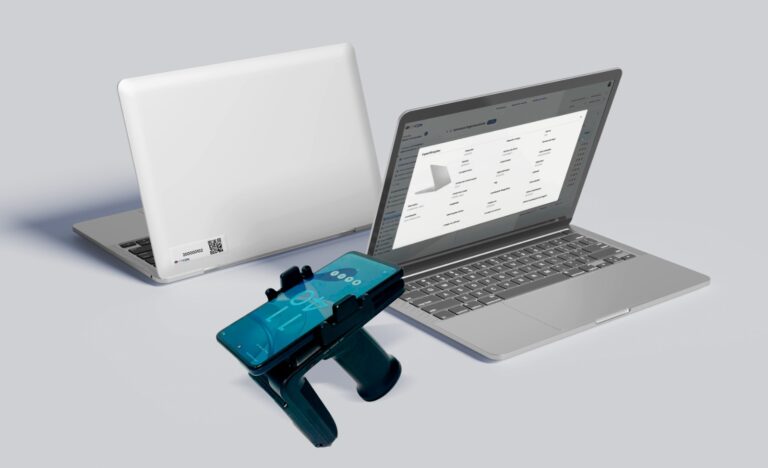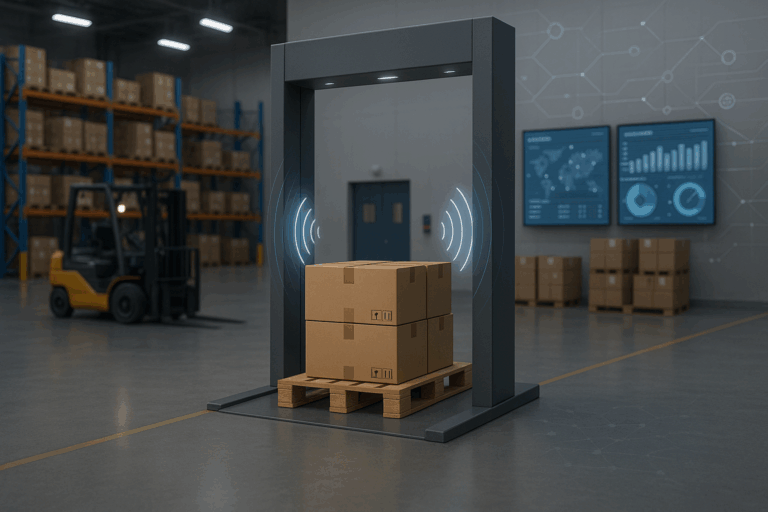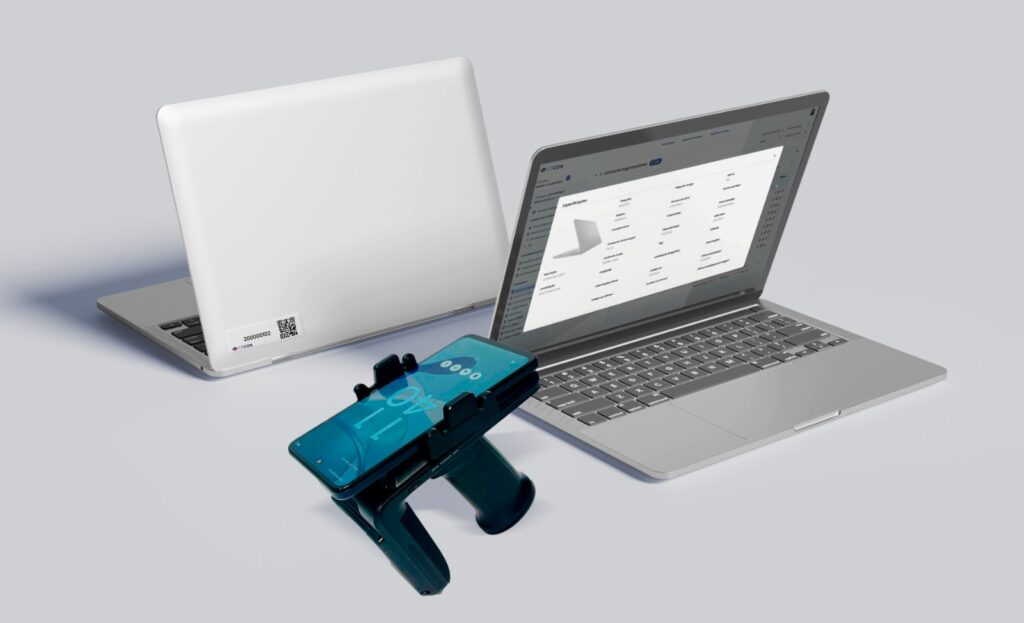Asset tracking is the strategic process of identifying, monitoring, and managing physical assets across their lifecycle—ensuring visibility, control, and accurate financial representation. In environments where operational complexity is high and regulatory demands are growing, asset tracking has become more than a logistical function. It’s a pillar of governance, compliance, and decision-making.
Despite the evolution of tracking technologies such as RFID, many organizations still struggle to implement efficient, scalable asset management strategies. Why? Because the problems are rarely about tools alone—they often stem from structural flaws, fragmented processes, and cultural resistance.
In this article, we’ll explore the five most common mistakes companies make when trying to manage their assets—and how to prevent them. We’ll connect each issue to real business risks, share tactical solutions, and demonstrate how a robust tracking system can turn chaos into clarity.
Table of Contents
ToggleWhat You’ll Learn in This Article
- The true meaning (and value) of asset tracking
- The 5 critical mistakes you must avoid
- Hidden risks of poor tracking systems
- How to choose the right technology
- Why RFID is the best choice in dynamic environments
- How CPCON turns tracking into strategy
- Practical answers to the most common questions

What do you mean by asset tracking?
What is asset tracking? Asset tracking is the process of monitoring and managing physical assets using technology like RFID or barcodes. It provides visibility, accuracy, and compliance.
Asset tracking refers to the real-time or periodic process of collecting, organizing, and updating information about physical goods within an organization. This includes fixed assets (like machines, furniture, or buildings), movable inventory (such as tools or medical devices), and even consumables.
Modern asset tracking integrates digital identifiers—barcodes, RFID tags, QR codes—with software platforms to provide a dynamic, centralized view of asset status, condition, and location. This transforms static data into actionable intelligence.
Example: In a healthcare environment, RFID-tracked infusion pumps can be located instantly, reducing time-to-care and preventing theft or loss. Each scan updates the system with usage, maintenance status, and availability.
Asset tracking directly impacts financial reporting, depreciation accuracy, risk mitigation, and operational continuity. Inadequate control over assets can lead to inflated balance sheets, missed audit findings, and compliance violations.
Mistake #1: Relying on Manual Tracking Methods
Despite living in a data-driven era, many organizations still track assets using outdated methods—spreadsheets, paper logs, and disconnected databases. These systems lack real-time capabilities, depend on human memory, and are vulnerable to inconsistencies.
The root of this choice is often budgetary: manual methods seem cost-effective upfront. But this perceived saving comes at the price of scalability, traceability, and long-term efficiency.
Strategic Risks
- Inaccurate asset valuations can lead to misstated financial statements.
- Audit failures may result from mismatched records and physical assets.
- Delays in locating critical assets can cause operational bottlenecks, especially in manufacturing or healthcare.
- No audit trail, making investigations or incident tracking nearly impossible.
Practical Example
A logistics company relying on spreadsheets to track containers faced a recurring issue: misplaced units led to rerouting, overtime, and penalties. After switching to RFID-enabled asset tracking, the company reduced lost containers by 92% in six months and improved SLA compliance.
Solution: Implement an Automated Tracking System
Modern tracking systems using RFID or barcodes offer:
- Real-time visibility with location-based scanning
- Automatic data capture during asset movement
- Integration with ERP/CMMS for lifecycle visibility
- Analytics dashboards that inform decisions
CPCON, for example, offers RFID gateways and mobile solutions that register asset movements automatically—no more manual entry or lost information. Accuracy becomes the standard, not the exception.

Mistake #2: Inadequate Asset Categorization and Identification
Poor asset classification is a silent killer of efficiency. Without a unified system to label and categorize assets, companies lose time, reliability, and the ability to generate meaningful reports.
This problem grows exponentially in large organizations with multiple locations and departments. Without consistent taxonomy, teams duplicate efforts, create conflicting databases, and miss maintenance windows.
Strategic Risks
- Loss of traceability: Assets go “missing” even though they exist.
- Inaccurate depreciation schedules: Items are grouped incorrectly, skewing calculations.
- Inefficiency in maintenance: Incorrect tagging leads to misalignment in spare part orders and PMs.
- Compliance issues: Auditors can’t validate asset data against categories.
Practical Example
A multi-site manufacturing company had five different naming conventions for the same machine model. Reporting by type became unfeasible. After implementing a global classification model with structured asset IDs, they cut downtime by 35% and achieved ISO 55000 compliance in under a year.
Solution: Build a Smart Classification Framework
Adopt a hierarchical structure (e.g., Category > Subtype > Serial > Location). Use:
- Standardized naming conventions
- Unique asset tags (QR/RFID) with embedded metadata
- Rules for new asset entries across departments
- Digital forms to avoid free-text inputs
Systems offered by CPCON integrate these standards natively—improving reporting, audit readiness, and interdepartmental communication.
Looking to dive deeper into RFID-enabled operations?
Read our guide on RFID and AI in Healthcare and see how technology enhances traceability and decision-making in complex environments.
Mistake #3: Neglecting Regular Audits and Data Updates
Even with a robust tracking system in place, asset data can become obsolete quickly if not maintained. Mergers, relocations, write-offs, or simple inattention often result in outdated records—eroding trust in the entire system.
The illusion of control is dangerous. Without frequent reconciliation, what’s in your system may no longer reflect reality.
Strategic Risks
- Ghost assets inflate the asset base and distort depreciation.
- Unrecorded disposals create compliance issues and tax liabilities.
- Obsolete equipment remains listed, misleading users and managers.
- Inaccurate financial statements expose the business to audit risk and reputational damage.
Practical Example
A regional hospital failed to update its asset registry after multiple expansions. During a regulatory audit, over 300 medical devices were either missing or listed with incorrect values—resulting in a qualified opinion and months of remediation.
After adopting quarterly physical audits with handheld RFID scanners, discrepancies dropped by 87% within a year, and audit readiness was restored.
Solution: Institutionalize the Audit Process
- Define audit frequency by asset criticality and mobility
- Use RFID-enabled devices to automate validation
- Implement change logs for every acquisition, transfer, or disposal
- Train departments to flag discrepancies in real time
CPCON’s asset verification services combine physical inventory with system reconciliation—ensuring your digital registry reflects the real world.

Mistake #4: Insufficient Training and User Adoption
Technology is only as powerful as its users. A common mistake in asset tracking projects is underestimating the human factor. Without full adoption, even the best platforms fall short.
Resistance often comes from fear, lack of clarity, or complexity. When employees don’t understand the “why,” they revert to manual methods—breaking the chain of traceability.
Strategic Risks
- Partial or inconsistent use of the tracking system
- Data silos created by informal tracking alternatives
- User frustration leads to abandonment or workaround behavior
- Underutilization of advanced features like geolocation or maintenance alerts
Practical Example
A national retailer invested in a custom asset tracking solution but failed to provide onboarding for store managers. As a result, only 20% of stores actively used the platform. After launching a gamified training program and assigning regional “asset champions,” usage rose to 94%, enabling consolidated reports and predictive maintenance across the network.
Solution: Empower People, Not Just Processes
- Design role-based training programs
- Highlight individual benefits (“less paperwork”, “faster access”, etc.)
- Use champions to drive cultural adoption
- Collect and act on feedback to improve usability
CPCON supports onboarding with user-friendly interfaces, local language support, and operational playbooks—bridging the gap between strategy and execution.
Ready to transform your asset management?
Contact CPCON and discover how our integrated solutions can help you reduce risks, ensure compliance, and gain full control.
Mistake #5: Choosing the Wrong Technology for Your Needs
Asset tracking is not a one-size-fits-all solution. Many companies fall into the trap of choosing tools based solely on price or generic features—without assessing how they align with real operational challenges.
This leads to misalignment between what the system offers and what the business actually needs.
Strategic Risks
- Overengineering: Complex tools slow down workflows instead of enhancing them
- Underperformance: Critical functions (like real-time tracking) are missing
- Integration failures: Lack of compatibility with ERP or maintenance systems
- Scalability issues: System collapses as asset volume grows
Practical Example
A mining company adopted an indoor tracking system for heavy equipment—despite operating mostly outdoors. Signals failed, coverage dropped, and tracking was unreliable. After switching to long-range passive RFID and integrating it with GPS for field assets, uptime monitoring and maintenance compliance improved dramatically.

Solution: Match Technology to Environment
Evaluate:
- Asset type and value
- Mobility and operating conditions
- Integration needs (ERP, EAM, CMMS)
- User environment (field, factory, office)
- Growth trajectory (asset base and users)
CPCON offers modular, scalable solutions—adapting RFID, QR codes, IoT sensors, and analytics to each context, ensuring performance, flexibility, and long-term ROI.
Want to ensure your next audit runs smoothly?
Explore our article on Fixed Asset Audit: Checklist with 5 Practical Steps to Prepare Yourself and discover how to build a compliant and efficient asset control system.
What are the risks of poor asset tracking?
Poor asset tracking can lead to ghost assets, financial misstatements, audit failures, operational delays, and non-compliance with regulations.
These risks aren’t abstract—they manifest in day-to-day operations and strategic reporting. When assets are not accurately tracked:
- Companies may depreciate items that no longer exist (ghost assets)
- Maintenance plans become unreliable, increasing equipment downtime
- Internal controls fail to detect irregularities
- Auditors find discrepancies that compromise certifications
- Budget planning is based on incomplete or inflated data
Addressing these issues early helps prevent a domino effect of operational and financial exposure. An accurate tracking system is essential not only for compliance, but also for trust in your internal reports.
What’s the best asset tracking method?
RFID is the most efficient method for high-mobility environments. It enables automatic asset detection without manual input or line-of-sight scanning.
Unlike barcodes, which require human intervention and visibility, RFID tags can be read remotely and in bulk. This is ideal for sectors like logistics, healthcare, and industrial operations where assets move frequently or are located in inaccessible areas.
RFID systems also offer richer data—such as timestamped movement logs, geolocation, and environmental conditions when paired with IoT. This transforms asset tracking from a passive registry into a real-time, strategic tool.
CPCON specializes in implementing RFID infrastructure tailored to your needs, combining fixed portals, handheld readers, and software analytics for total control.
How CPCON Supports Your Asset Tracking Journey
When it comes to asset tracking, technology alone is not enough. Companies need a strategic partner that understands the complexity of operations, adapts to industry-specific needs, and delivers scalable, measurable results. That’s where CPCON comes in.
With over 25 years of expertise across logistics, healthcare, retail, energy, and manufacturing, CPCON delivers asset tracking solutions that go far beyond implementation. Our approach combines hardware, software, and consultancy in a single, integrated ecosystem—tailored to your business reality.
What sets CPCON apart:
- RFID and Barcode Technologies adapted to your asset mobility, frequency of use, and environmental conditions
- Mobile tracking platforms with real-time dashboards for decision-makers
- Asset classification workshops to standardize categories, naming conventions, and internal controls
- Physical audits powered by intelligent scanning tools that validate, reconcile, and update your asset registry
- Full integration with ERPs and CMMS for seamless data exchange and lifecycle management
- Ongoing support: from onboarding to optimization, we help teams adopt and evolve
We’re not just technology providers—we’re strategic enablers. With CPCON, your asset data becomes a trusted source for forecasting, budgeting, compliance, and growth planning. Your teams gain control. Your systems gain reliability. Your company gains visibility.
“At CPCON, we don’t just track assets. We empower companies to make decisions with confidence, knowing their information is real, updated, and actionable.”
— Tiago Jeveaux, COO, Grupo CPCON
Ready to take the next step toward smarter asset control?
Talk to our team and discover how CPCON can tailor a tracking strategy that fits your reality, scales with your growth, and delivers measurable results from day one.
Conclusion
Asset tracking is no longer a back-office concern—it’s a strategic capability that influences everything from compliance to cost control. When missteps go unnoticed, the consequences ripple through financial statements, audits, and daily operations.
By identifying and eliminating the five most common asset tracking mistakes, companies can build a resilient, scalable foundation for smarter decision-making, increased efficiency, and sustainable growth. This isn’t about adding technology for the sake of it—it’s about designing processes that deliver visibility, accuracy, and control across the asset lifecycle.
Ready to turn your asset tracking into a source of competitive advantage?
Talk to CPCON today and discover how our end-to-end solutions can help you eliminate inefficiencies, reduce audit risks, and unlock the full potential of your physical assets.
FAQ
What is asset tracking and why is it important?
Asset tracking is the process of monitoring physical assets using technology like barcodes or RFID. It ensures accurate records, real-time visibility, and compliance with accounting and operational standards.
How does asset tracking reduce operational costs?
By preventing asset loss, minimizing manual errors, and optimizing maintenance, tracking systems cut unnecessary spending and improve resource allocation across departments.
What is the difference between RFID and barcode tracking?
Barcodes require line-of-sight scanning and manual input, while RFID allows automatic identification without direct visibility. RFID is ideal for environments with high asset flow and speed requirements.
Can asset tracking be integrated with my ERP system?
Yes. Modern asset tracking platforms, including those offered by CPCON, can be integrated with ERP, EAM, and CMMS systems—ensuring consistent data across your entire organization.
How often should I conduct a physical asset audit?
Audit frequency depends on your industry and asset mobility. Many companies benefit from quarterly or semi-annual audits, especially in regulated sectors like healthcare or logistics.
What KPIs can I monitor with an asset tracking system?
Key metrics include asset utilization rate, maintenance compliance, audit accuracy, loss rate, and lifecycle cost per asset. These indicators help improve operational performance and investment planning.
How can CPCON help improve our asset tracking strategy?
CPCON offers a complete solution—from asset classification and RFID deployment to system integration and physical audits. We tailor our services to your operational needs, ensuring maximum control and ROI.























